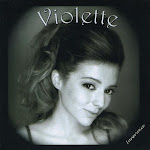Speaking of the latter, when I started my career the phones rang constantly, but now it's the e-mail in box that fills up at an alarming rate. I don't even have a physical in box on my desk anymore. Agents send proposals, and authors submit their manuscripts for editing electronically. 90% of my submissions are read on a Sony E-Reader. I still edit on hard copy, but transfer my changes to a Word document with track changes. I do have one author who does not own a computer. He doesn't know anything of the culture (blogs, message boards, :), IMing, etc.). He  wouldn't have been much of anomaly even a few years ago, but working on his book at times has been a bit like going through your usual day with one arm tied behind your back--not unlike when we have a power failure and all productivity ceases. I've had to use the archaic fax machine, mail hard copies of covers and manuscripts, and talk on the phone with him daily. I don't know that it is that much less efficient than using the computer--in a way it's a bit nostalgic. This is how it was for most when I started in publishing ten years ago, but I can't help but wonder if ten years from now people will be at a loss as to how to communicate with someone without a computer.
wouldn't have been much of anomaly even a few years ago, but working on his book at times has been a bit like going through your usual day with one arm tied behind your back--not unlike when we have a power failure and all productivity ceases. I've had to use the archaic fax machine, mail hard copies of covers and manuscripts, and talk on the phone with him daily. I don't know that it is that much less efficient than using the computer--in a way it's a bit nostalgic. This is how it was for most when I started in publishing ten years ago, but I can't help but wonder if ten years from now people will be at a loss as to how to communicate with someone without a computer.
 wouldn't have been much of anomaly even a few years ago, but working on his book at times has been a bit like going through your usual day with one arm tied behind your back--not unlike when we have a power failure and all productivity ceases. I've had to use the archaic fax machine, mail hard copies of covers and manuscripts, and talk on the phone with him daily. I don't know that it is that much less efficient than using the computer--in a way it's a bit nostalgic. This is how it was for most when I started in publishing ten years ago, but I can't help but wonder if ten years from now people will be at a loss as to how to communicate with someone without a computer.
wouldn't have been much of anomaly even a few years ago, but working on his book at times has been a bit like going through your usual day with one arm tied behind your back--not unlike when we have a power failure and all productivity ceases. I've had to use the archaic fax machine, mail hard copies of covers and manuscripts, and talk on the phone with him daily. I don't know that it is that much less efficient than using the computer--in a way it's a bit nostalgic. This is how it was for most when I started in publishing ten years ago, but I can't help but wonder if ten years from now people will be at a loss as to how to communicate with someone without a computer.Yesterday morning I went to a photo session at the Nashville Zoo--a bit of a mixed bag in terms of the shots, as it was overcast, the subjects (chinchilla, skunk, kinkajou, two-toed sloth, and serval--which was gorgeous, like a living Egyptian statue) moved a lot, and my camera, I'm realizing, is pretty basic. The zoo was crawling with photographers, not just because of the 15 people in the session I was there for. Apparently there was a photography class present, and another group of at least 30 people all in matching blue shirts and toting high-end cameras. I suspect the current fuel shortages kept a lot of other folks away. But it was great to have so many photographers around as I was able to start asking questions about upgrading to a new camera. One man recommended the Cannon Rebel or Cannon D40 as a good reasonably-priced intermediary between amateur and professional--he let me try his, which had a telephoto lens he was trying out that was about half the length of my arm. The shots were so much better than mine, though, even on the small display. Another man praised his Pentex for it's built in stability control and attached back-up battery. Last weekend, many had Nikons, though I didn't ask about the features. I still have a lot to learn about what to look for in a camera (I'm starting to grasp the meaning of aperture and shutter speed, but still working on how to use them). Thanks to my new Meet-ups groups I have access to 300+ local photographers from whom I can seek advice via the message board. So oddly, the very thing that once isolated people has become the thing that facilities society. I wonder how I could not believe that, though. I am writing a blog.











